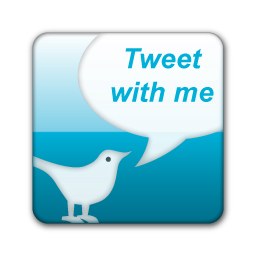The Speaking Practically Blog Has Moved!
Find the old posts and new posts at
http://SpeakingPractically.com !
I’m scheduled to speak at a breakout session on February 5th for the social media conference SoCon in Atlanta (more info at http://SoCon11.com). I started tweeting about #SoCon11 on January 6th, the same day I first saw my mug on the SoCon speakers’ web page and figured they couldn’t change their minds!
Other than being elated and honored to be asked to speak, why would I tweet about #SoCon11? Consider this…
I myself have just over 400 followers on Twitter. From January 6 to today, January 28th, I’ve been retweeted or had my tweet posted on a Twitter summary blog by 7 people – 5 of whom I know and 2 I don’t (thanks y’all!). But get this… between those 7 people, they have 18,722 followers! So let’s break down what I’m doing and why.
What to Tweet
What do you guess is the number one criticism of Twitter? From my experience it’s been along the lines of, “Why would I want to know what you’re doing? I could care less if you’re brushing your teeth!” So as I was preparing my tweets for SoCon, I didn’t want to be all – Look at me, I’m speaking at SoCon! A little of that may be OK. I know some of my followers are super encouraging of my career and, dare I say, even fans of my speaking. But there are plenty of other good (maybe better) things to tweet!
Show the Event Organizer Some Love
Because of my tweets, potentially 18,722 more people could have learned about SoCon. Now, did all 18,722 people see the tweets? Not a chance. Did any of the tweets result in more people signing up for SoCon? I have no way of knowing. But do you think the event organizers appreciate getting more attention for their event? You betcha!
All my tweets had the #SoCon11 hashtag and a link back to the conference website. If anyone of those 18,722 were curious, they certainly had the information they needed to explore.
Provide Value
Most of my tweets were chunks of advice that I’ll discuss during my session at SoCon. Why would I do that? Why would I give away what I have to say?
I know there are a lot of great breakout sessions going on during SoCon. If the readers are interested in the subject matter and these chunks of information resonate with them, then perhaps they’ll be more likely to choose my session feeling confident that they will get great content by attending my session. (And I won’t disappointment!)
Start a Conversation
Collectively, any audience is going to know more than any one speaker. Tweeting questions ahead of time can be an excellent way to learn from others. In one of my tweets, I mentioned that my favorite way to follow a conference was using http://TweetChat.com. Then I asked, “What’s yours?” That tweet got some attention, taught some people about a tool that they weren’t aware of and opened up the question to see if anyone had a better way. As it turned out, I didn’t get a reply to the question part – so TweetChat remains my favorite!
Make New Friends and Keep the Old
In addition to planned tweets related to my appearance at the conference, I’ve been checking out other tweets with the #SoCon11 hashtag. I’ve chatted via Twitter with friends who are going to SoCon and those who can’t make it this year, but plan to follow the Twitter stream. I’ve provided a question to the person conducting the panel interview during the opening session. I’ve retweeted messages from the event organizers.
As you follow people, as you engage in these conversations on line, you really do get to know them better, which makes seeing them in person all the more exciting. It gives those considering the conference even more incentive to attend. It’s great to feel connected.
But Wait There’s More!
So these are ways to start engaging with your audience even before you speak. And we haven’t even gotten to the good stuff yet… using Twitter for audience interaction! We’ll start talking about that in the next post!

